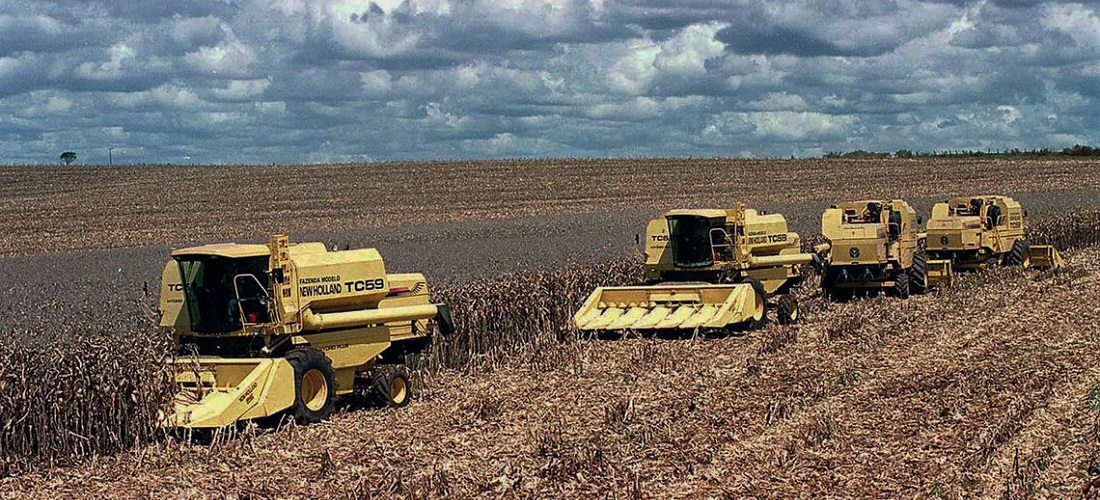
Technology increases agricultural productivity and decreases labor
Oct, 25, 2019 Posted by Sylvia SchandertWeek 201944
The production of agricultural activities reached R$465.5bn in 2017, of which 66.2% (R$308bn) was related to plant production and 33.8% (R$157.4bn) was related to animal production. Of the vegetable production, 77% comes from temporary crops, 13% from permanent crops, 5.7% from forestry, 2.8% from horticulture, 0.7% from plant extraction, and 0.6% from floriculture. Animal production is divided into 70.5% large, 19% poultry, 8% medium size, and 2.5% small size.
The data are in the 2017 Agricultural Census, released today (10/25) by the Brazilian Institute of Geography and Statistics (IBGE). The survey took a snapshot of the Brazilian field on September 30, 2017, with data for the period between October 1, 2016 and the base date.
The survey shows that the planted area did not increase significantly, but the production was much higher. For example, yield in kilograms per hectare planted in herbaceous cotton increased from 2,900 in 2006 to 4,100 in 2017, soybeans rose from 2,500 to 3,300, corn increased from a yield of 3,500 kilos per hectare to 5,500, rice went from 4,000 to 6,400, and beans rose from 734 to 1,000 kilos per hectare planted.
In livestock, the Brazilian herd had 172.7m head of cattle on the reference day. Despite the reduction in the number of milked cows from 12.7m to 11.5m, milk productivity rose from 1,600 to 2,600 liters per cow per year.
According to census manager Antônio Florido, the increase in productivity reflects the use of new techniques and technologies in the field, such as irrigation, which increased 48% and reached 10% of the establishments, and no-tillage, which increased by 85% of the area in which this technique was used.
“In terms of structural size change, practically nothing has changed. What happened in those 11 years was more technology, more research, more resources for more income at less expense. There is more animal and plant genetic improvement, new technologies, new uses, automation of activities, which may lead to the conclusion of a decrease in the workforce employed and more efficiency.”
Mechanization
Mechanization in the field grew in the period, with the number of tractors rising from 820,718 to 1,229,907 (about 50%). The establishments that had harvesters went from 116,000 to 172,000 (about 48%), and fertilizer applicators from 147,800 to 253,600 (more than 70%).
On the other hand, the total number of persons employed in agricultural establishments in Brazil amounted to 15.11m, including producers, kinsmen, and temporary or permanent employees. The total number fell by 1.5m people and the average per establishment fell from 3.2 in 2006 to 3 in 2017. Of this total, 74% of workers were related to the producer interviewed.
If only family farms are taken into account, there was a reduction of 2.16m employed persons, while in other establishments the workforce increased by 702,900 workers. The number of establishments with non-farm income increased by 79% to 1.15m.
The survey also shows that there was a significant increase in outsourced labor, with 143% more than in 2006, reaching 611,624 establishments using this form of work. Within this modality, most are through contractors, with a total of 497,247, an increase of 108%.
Source: Agência Brasil
-
Trade Regulations
Sep, 21, 2022
0
CBP signs Mutual Recognition Arrangement with Brazil
-
Ports and Terminals
Sep, 26, 2019
0
A new chapter of the dispute for the expansion of the Port of Manaus
-
Shipping
Nov, 22, 2021
0
COP26 puts pressure on the maritime sector to zero emissions by 2050
-
Shipping
Jan, 09, 2020
0
ANTAQ confirms cabotage vessels are operating close to 76.2% of capacity


